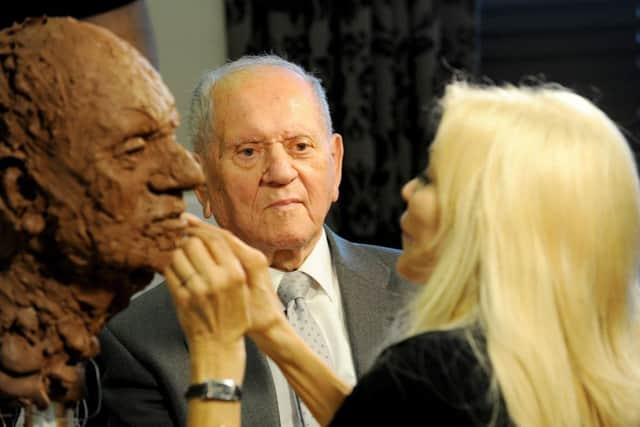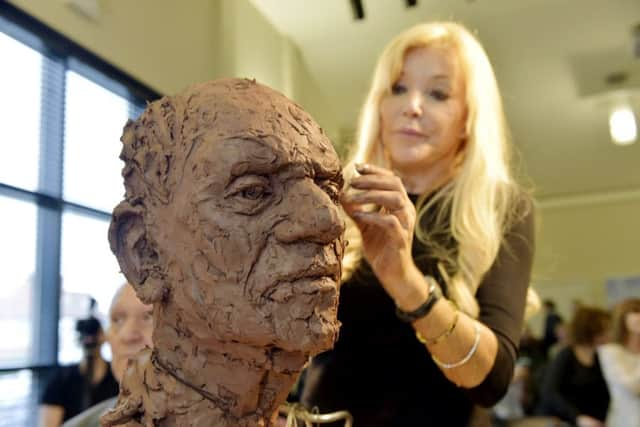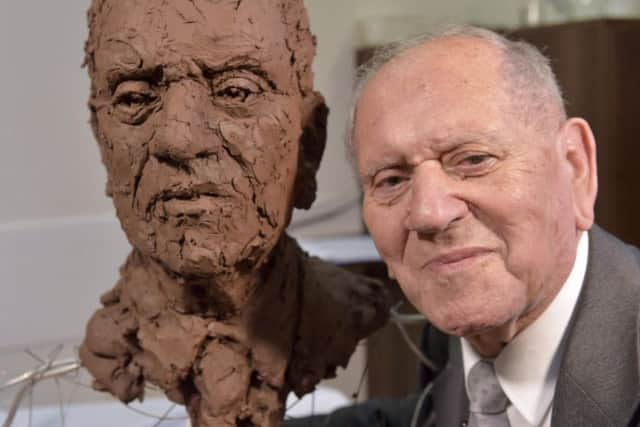Sculptor putting a brave face on horror of the past
But Frances Segelman’s latest project was altogether more personal.
In the space of two hours and before an audience of 200, she created a bust of Arek Hersh, an 88-year-old survivor of the Holocaust who lost his family to the Nazis.
Advertisement
Hide AdAdvertisement
Hide AdThe event in Leeds yesterday, which she called a “live sculpt”, was the latest of a series in which she tries to capture in clay a single moment in time.


“It’s like a photograph,” said Ms Segelman, who was born in north Leeds and is married to the millionaire philanthropist Sir Jack Petchey.
“I don’t think there’s anyone else who does it in two hours.
“I won’t do it without an audience. The more people I have, the quicker I am. I have been known to do it in an hour and a half.
Advertisement
Hide AdAdvertisement
Hide Ad“I go into a kind of tunnel vision and I have to think positive thoughts all the way through. I cannot allow one negative thought to go into my head.”


Ms Segelman, whose previous subjects have included Boris Johnson, Bruce Forsyth, Joanna Lumley and Sir Steve Redgrave, said it was a “privilege” to be asked to sculpt Mr Hersh by the Makor cultural charity. The finished bust will be donated to the National Holocaust Museum.
“I’ve been very, very moved by his story,” said Ms Segelman, whose own ancestors were from eastern Europe. “There are no words to explain it. And to be able to sculpt someone and capture them after they’ve been through something like that and before they pass away is sensational.”
The sitting, at the charity’s offices in Leeds, began with a 30-minute private meeting and then a public measuring of Mr Hersh’s head with callipers.
Advertisement
Hide AdAdvertisement
Hide Ad“When I do these very fast pieces, I find that the character comes out in the sculpture and it’s often some of my best work,” said Ms Segelman.


“The quick ones are like photographs, capturing the moment, and it’s really super.”
Her bigger works, she said, took much longer – and for the Billy Bremner statue, commissioned by his old club, Leeds United, she worked for several months in a bedroom of her London home.
“The sculpture was 9ft tall and the bedroom was the only place in the house with a high enough ceiling,” she said,
Advertisement
Hide AdAdvertisement
Hide AdA Leeds United supporter during her teenage years in the 1960s, she had been handed the commission after the club made a public appeal for artists and her stepfather persuaded her to throw her hat in the ring.


“At first I said I couldn’t possibly do it,” she said. “I’m self-taught, and I had never done anything like it in my life.
“Then, when I was half way through it I got a call from the Palace to say I had got the Prince Philip commission, too. I was so excited – it was just too much to cope with.”
She did not disclose how much the club had paid her, but she said: “I never really knew in those days how much to ask for.”
Advertisement
Hide AdAdvertisement
Hide AdThe Royal bust involved multiple sittings with her subject. “When I do the longer jobs I’ve got lots of time to think about it. Usually I’m doing uniforms and things, which take ages. There’s always something complicated on the bigger ones,” she said.
She has since sculpted the Queen and Prince Charles, but she doubts she will ever again do something on the scale of the Bremner statue. “I don’t like people helping,” she said. “I like to do everything myself.”